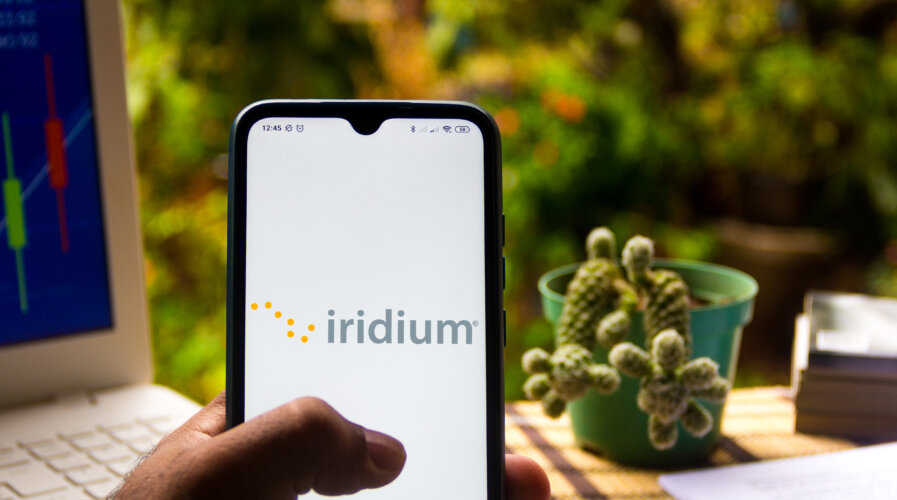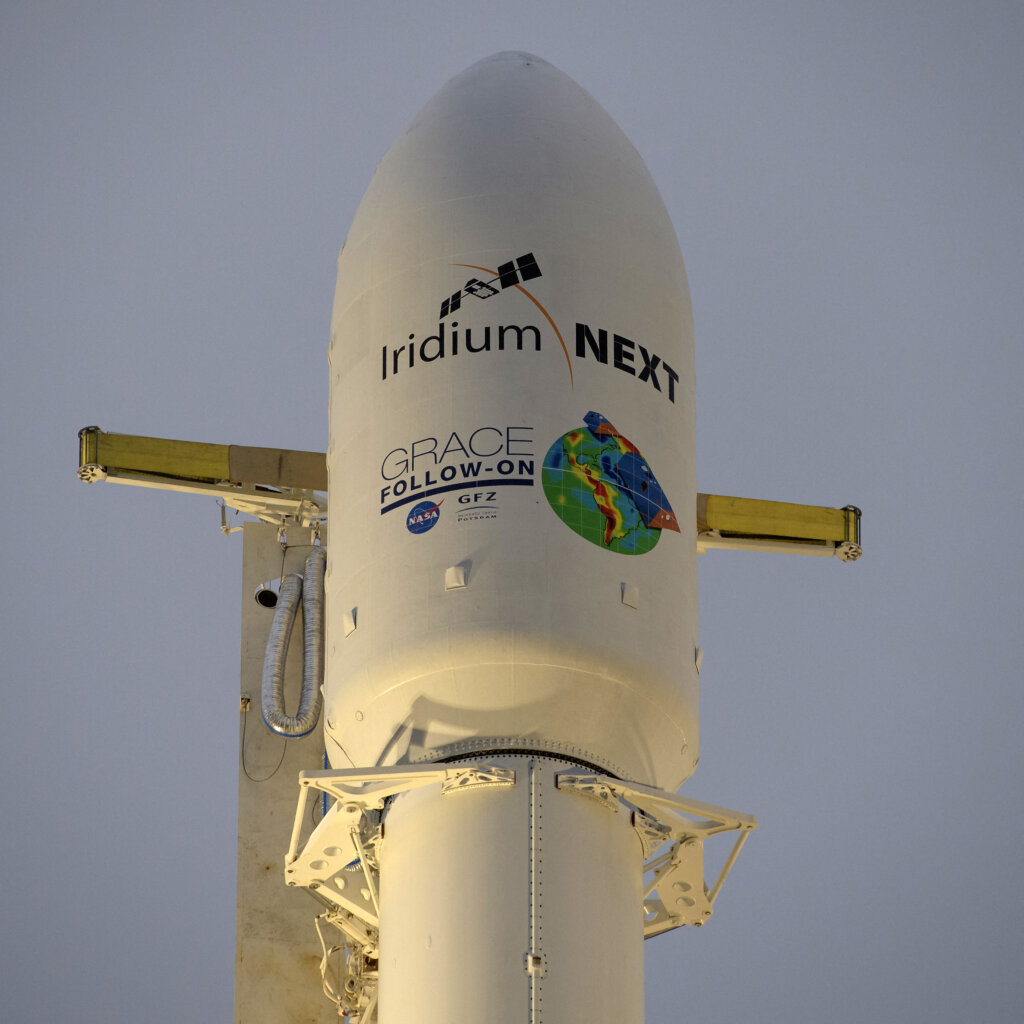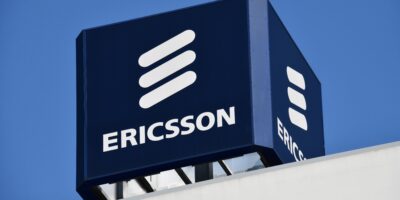
But Qualcomm and Iridium have plans on making sure satellite communication isn’t limited to our phones.Source: Shutterstock
How Iridium stays ahead in the space race
|
Getting your Trinity Audio player ready... |
Tech Wire Asia had the chance to visit Iridium’s booth at CommunicAsia 2023 and speak with the company’s executive vice president for sales and marketing.
Wireless technology has come a long way in the past two decades. Yet, smartphones are still useless in the most remote areas — a problem Qualcomm and Iridium intend to change. In January this year, the US mobile chip giant announced its partnership with the global satellite communications company, to bring cellular-to-satellite connectivity to Android smartphones.
Iridium offers worldwide broadband and narrowband communication via satellite with customers in the maritime, aviation, and transportation sectors. The company has been putting satellites into orbit since the late 1990s in such ways that allow users to fire off a message from anywhere — be it from the Antarctic, the middle of the Indian Ocean, or beyond.
Iridium’s services include 100% global coverage, and the United States (US) military is by far its biggest customer. However, the future of the McLean, Virginia-based company is the burgeoning Internet of Things (IoT) market.
Qualcomm and Iridium’s agreements would bring satellite-based connectivity to next-generation premium Android smartphones. The news came amidst a heated race within the smartphone industry to provide high-speed internet from satellites to smartphones.
Unlike Apple’s iPhones, which offer satellite service only in case of emergency, Android devices made with Qualcomm’s Snapdragon Satellite technology will be able to send standard text messages via satellite to anyone — not just emergency responders. According to Qualcomm, the first batch of Android devices featuring its Snapdragon Satellite are expected to be available from the second half of this year – which means anytime now.
But Qualcomm and Iridium plan to ensure satellite communication goes beyond just smartphones. Iridium has ambitions to roll out emergency messaging for areas without cellular coverage, and the company also intends to connect satellites to cars and other IoT devices possible.

Bryan J. Hartin,
rxecutive vice president for sales and marketing at Iridium Communications
Tech Wire Asia had the chance to visit Iridium’s booth at CommunicAsia 2023 and speak with Bryan J. Hartin, the company’s executive vice president for sales and marketing. Brian is also responsible for the global channel team. The following is a transcript of the interview, and some parts have been edited for brevity and clarity.
TWA: Could you share with us more about Iridium and the company’s role in the industry?
When it comes to Iridium’s commercial business, the first thing is that we are entirely a wholesale enterprise. Today, Iridium has about 500 partners who represent us and sell our products and services in the market. We have four lines of business: IoT, maritime, land, mobile, and aviation. Essentially, Iridium provides the enabling technology, which means we deliver modules that our partners will refer to build products for their end users. Those service providers will also resell our satellite voice and data services to the end user.
A perfect example is a ship that uses one of our terminals when they’re outside terrestrial coverage. Then we’ve also got heavy equipment OEMs like Caterpillar, Komatsu, Datsun, and Hitachi, who will use our technology to track their assets like bulldozers and trucks. In aviation, chances are that most commercial airliners have Iridium in the cockpit to communicate with air traffic control and for aviation safety services.

The SpaceX Falcon 9 rocket is seen with the NASA/German Research Centre for Geosciences GRACE Follow-On spacecraft and onboard, Monday, May 21, 2018, at Space Launch Complex 4E at Vandenberg Air Force Base in California. The mission will measure changes in how mass is redistributed within and among Earth’s atmosphere, oceans, land and ice sheets, as well as within Earth itself. GRACE-FO is sharing its ride to orbit with five Iridium NEXT communications satellites as part of a commercial rideshare agreement. (Photo by Bill INGALLS / NASA / AFP)
TWA: What sets Iridium apart from the rest?
There are many satellite companies, but Iridium is different because we operate in the L band — the most resilient and reliable band in communications. The L band will work even through bad weather. There are other bands like KU and KA, where you can get more speed. But the trade-off is it will not work in bad weather.
The other difference between us and some other satellite providers is that we are global, which means anywhere on the planet, you can get an Iridium signal and communicate.
TWA: How many satellites does Iridium operate?
We have 80 satellites, 66 of which support the primary mission or constellation we have today. Those 66 satellites are in a polar orbit. There are six planes of 11 satellites. So they’re constantly going north to south and around the Earth. And in tandem, the Earth is spinning. So that’s how we cover the basic constellation.
Then we also have in-orbit spares. We had nine in-orbit spares for 75 satellites, but we just launched five more spares. So now we have 80 satellites: 66 that support our over two million subscribers and 14 extras. So that’s one of Iridium’s unique features: we have a very efficient and cost-effective network.
We don’t need thousands of satellites like some other new entrants.
TWA: Would there be more commercialization toward satellite-to-mobile connectivity?
There are two players: Apple with GlobalStar and Qualcomm with Iridium. Qualcomm is a good partner for us because we don’t have to approach various OEMs. Qualcomm is at least a common denominator because its chips are in almost every Android smartphone.
As for Apple, in 2020, the company announced its plans to try adding satellite capability to a smartphone. Two years later, Apple launched the capacity on its iPhone 14 in collaboration with GlobalStar. Not to throw any shade at GlobalStar, but they do not have the network, capability, or reach and coverage that matters.
Iridium engaged with Qualcomm, who wanted to partner with a satellite provider at that point, so that they could at least match Apple and provide a differentiator in the market. Since our network is newer and we just launched in 2019, we got into an agreement. In fact, I was involved in the Qualcomm agreement for the better part of two years.
We started working with Qualcomm since they are the preeminent supplier of chips that go into all sorts of devices, especially smartphones. The plan was not for our modules to be put into Qualcomm-powered phones; instead, the goal was to put our waveform into a Snapdragon processor.
In short, it’s placing Iridium capability and conductivity onto Qualcomm’s chip and selling it to Android OEMs to put in the smartphone. Once enabled in those smartphones, you get outside terrestrial coverage and can then hit an SOS button and do two-way messaging.
Overall, the Qualcomm-Iridium agreement was made for two things: to develop the capability and to offer the services to end users. So for us, it’s critical because part of our strategic plan is to enable products worldwide and make those Iridium-connected.
TWA: What’s next for Iridium, and will the satellite-to-mobile connectivity business dominate the portfolio?
No, this isn’t going to replace our existing business. It is incremental to our existing business. But expanding beyond smartphones is also essential now since we already have this capability with Qualcomm. For context, Qualcomm also provides chips in millions of automobiles.
Before this, we couldn’t access all the automakers, which is undoubtedly a slow process. But Qualcomm provides that Snapdragon into autos for a whole bunch of capabilities and, soon, the autonomous capability that will come. For that, I reckon Iridium to be well suited for what I call command and control, which is the ability for an autonomous asset to communicate.
READ MORE
- Safer Automation: How Sophic and Firmus Succeeded in Malaysia with MDEC’s Support
- Privilege granted, not gained: Intelligent authorization for enhanced infrastructure productivity
- Low-Code produces the Proof-of-Possibilities
- New Wearables Enable Staff to Work Faster and Safer
- Experts weigh in on Oracle’s departure from adland


